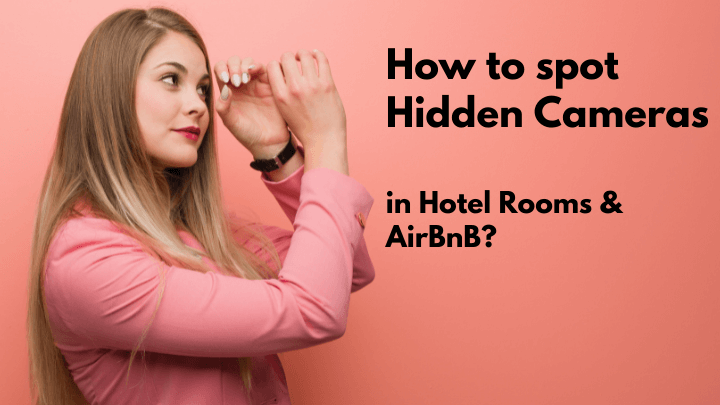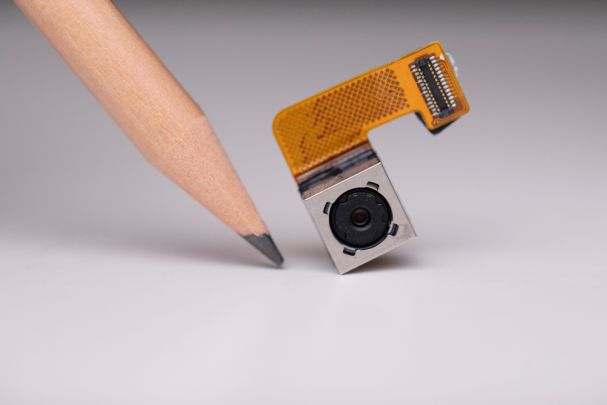
In a world where technology is never more than an arm’s reach away, it’s easy to feel like we’re always being watched, however for some people, that seemingly unnecessary fear can become a reality. Within the past 5 years there have been increasing reports of travellers finding hidden cameras within their rooms, often disguised as everyday items like shampoo bottles, phone chargers, alarm clocks and more.
According to one survey a staggering 11% of respondents said they had found a hidden camera in a hotel room or Airbnb. In South Korea, two men were arrested for live streaming the actions of around 1,600 people in motel rooms for paying customers to watch. It’s not just South Korea either, stories of the same thing happening have emerged from Australia, Cape Cod Massachusetts, Zhengzhou China and many more countries.
Fortunately, if you are concerned about the possibility of hidden cameras in your room, there are a few things you can do to track them down, all of which require very little effort or time. Learn practical tips and tricks regarding how to spot hidden cameras in hotel rooms & AirBnB.
1. Types of hidden camera
There are many different hidden cameras each of which are different in physical appearance as well as capabilities. Security cameras tend to come in three different varieties.
Most cameras designed for home security connect wirelessly to the internet and usually allow for footage to be viewed remotely and/or uploaded to a server outside of the premises. Other security cameras require a physical cable instead of using Wi-Fi in order to connect to a local network (this cable will also often provide power to the device). If the camera is connected to the internet there are various apps that can help you detect wired and wireless cameras.
The most common type of security cameras don’t actually have internet connectivity and usually record footage to an internal memory card that requires collecting at a later date. These cameras are impossible to detect using apps and programs, but can still be spotted through a physical inspection of your room.
2. Inspecting your room
The best way to find hidden cameras within your room is with a physical check. Cameras are often placed within hidden everyday objects like shampoo bottles, smoke detectors and other items that you’d expect to see within the environment of your room. Since many cameras require constant power, they’ll often be hidden inside electronic items within your room, that way the power cable is easily disguised and you aren’t likely to move these items.
Common items and objects used to hide hidden cameras can include but are not limited to;
- Smoke detectors
- AC power adapters
- Alarms
- Telephones
- Desks and lamps
- Power outlets
- Wall clocks
- Mirrors
- Soap dish
- Toothbrush holder
- Tissue boxes
- DVD players
- TV
- Books
- Hairdryer holders
- Pens

You’re looking for tiny pinholes within objects that wouldn’t normally be there as well as small, transparent areas in otherwise solid exteriors. It’s also worth checking AC vents and openings within your room as these are easy places to store hidden cameras.
3. How to use smart phone to find hidden camera
If a basic inspection doesn’t turn anything up, then your phone is the next step. There are two different checks you can perform with your phone; checking for cameras on the network or using the torch to detect physical cameras.
The lens of a camera will reflect light to some degree, meaning, if you draw the curtains, turn off the lights and use your phone torch to check the room you may be able to locate the reflection of hidden cameras. You’ll have to scan the room slowly in order to detect any hidden cameras as the light from your torch will need to hit the lens at the right angle for you to notice it.
You can also use your mobile phone to check the network for hidden cameras. If the camera is using the same Wi-Fi network that you’re connected to, there are numerous apps that can help you detect whether a camera is connected to that same network. This option is often better in an Airbnb than a hotel as there will be far fewer devices connected to the network. Once connected, use apps like WiFiman and Fing to detect devices connected to the network. You’ll then be able to check the list of devices for any connected cameras that appear. Sometimes cameras hidden in Airbnbs may be on their own private network that you won’t have access to, this makes finding connected cameras that bit harder.
Luckily, you can use these same apps to check for other WiFi networks around you and will display their signal strength. Any network with a similar or stronger signal that the one you’re connected to means it’s likely in close proximity, so keeping an eye out for any oddly named networks is worth it. It’s also worth trying to run the scan from different areas of the home to ensure you’re within range of all devices on the connected network.
4. Other devices to spot hidden camera in a room
Desktop:
You can also run scans from your desktop computer using programs like Nmap and Kismet, these allow you to analyse the network and see the type (and sometimes the content) of traffic being shared and moved across the network. If you notice larger amounts of video traffic, this could be a telltale sign that there’s a hidden camera within the property.
Handheld Gadgets:
You can also purchase consumer-grade “camera detection” gadgets, however, we don’t know how well these work and so while it might find a camera within your room, you could also be paying for something that doesn’t even work.
Another option is to purchase a radio frequency scanner that can help detect hidden wireless cameras, even if it’s connected to its own dedicated Wi-Fi network. The problem with this is radio frequency scanners may detect other wireless devices crowding the airspace. Even if you manage to turn these devices off, there may be other devices within the property that emit wireless signals, you also have no control over signals from outside the property.
Ideally, this isn’t ever something you’ll find in your Airbnb or hotel room, and you can enjoy your holiday without the thought that someone may be watching you. However, it’s always worth giving your room a once over as you never know who might be trying to watch.
This article was written by the experts at Vanity Studios; a professional photography studio located in London offering a range of photoshoot packages and services.
